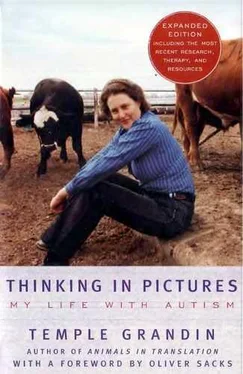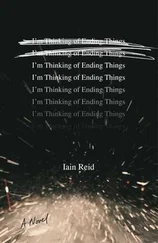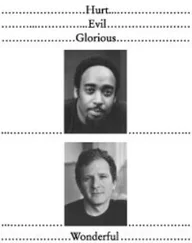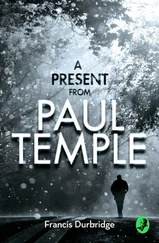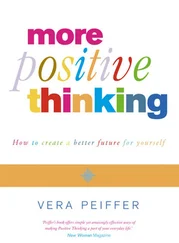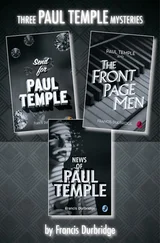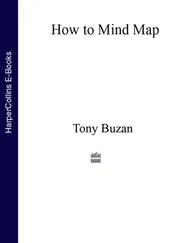Recent research by Dr. Pascual-Leone at the National Institutes of Health indicates that exercising a visual skill can make the brain's motor map expand. Research with musicians indicates that real practice on the piano and imagining playing the piano have the same effect on motor maps, as measured by brain scans. The motor maps expand during both real piano playing and mental imagery; random pushing of the keys has no effect. Athletes have also found that both mental practice and real practice can improve a motor skill. Research with patients with damage to the hippocampus has indicated that conscious memory of events and motor learning are separate neurological systems. A patient with hippocampal damage can learn a motor task and get better with practice, but each time he practices he will have no conscious memory of doing the task. The motor circuits become trained, but damage to the hippocampus prevents the formation of new conscious memories. Therefore, the motor circuits learn a new task, such as solving a simple mechanical puzzle, but the person does not remember seeing or doing the puzzle. With repeated practice, the person gets better and better at it, but each time the puzzle is presented, he says he has never seen it before.
I am fortunate in that I am able to build on my library of images and visualize solutions based on those pictures. However, most people with autism lead extremely limited lives, in part because they cannot handle any deviation from their routine. For me, every experience builds on the visual memories I carry from prior experience, and in this way my world continues to grow.
About two years ago I made a personal breakthrough when I was hired to remodel a meat plant that used very cruel restraint methods during kosher slaughter. Prior to slaughter, live cattle were hung upside down by a chain attached to one back leg. It was so horrible I could not stand to watch it. The frantic bellows of terrified cattle could be heard in both the office and the parking lot. Sometimes an animal's back leg was broken during hoisting. This dreadful practice totally violated the humane intent of kosher slaughter. My job was to rip out this cruel system and replace it with a chute that would hold the animal in a standing position while the rabbi performed kosher slaughter. Done properly, the animal should remain calm and would not be frightened.
The new restraining chute was a narrow metal stall which held one steer. It was equipped with a yoke to hold the animal's head, a rear pusher gate to nudge the steer forward into the yoke, and a belly restraint which was raised under the belly like an elevator. To operate the restrainer, the operator had to push six hydraulic control levers in the proper sequence to move the entrance and discharge gates as well as the head- and body-positioning devices. The basic design of this chute had been around for about thirty years, but I added pressure-regulating devices and changed some critical dimensions to make it more comfortable for the animal and to prevent excessive pressure from being applied.
Prior to actually operating the chute at the plant, I ran it in the machine shop before it was shipped. Even though no cattle were present, I was able to program my visual and tactile memory with images of operating the chute. After running the empty chute for five minutes, I had accurate mental pictures of how the gates and other parts of the apparatus moved. I also had tactile memories of how the levers on this particular chute felt when pushed. Hydraulic valves are like musical instruments; different brands of valves have a different feel, just as different types of wind instruments do. Operating the controls in the machine shop enabled me to practice later via mental imagery. I had to visualize the actual controls on the chute and, in my imagination, watch my hands pushing the levers. I could feel in my mind how much force was needed to move the gates at different speeds. I rehearsed the procedure many times in my mind with different types of cattle entering the chute.
On the first day of operation at the plant, I was able to walk up to the chute and run it almost perfectly. It worked best when I operated the hydraulic levers unconsciously, like using my legs for walking. If I thought about the levers, I got all mixed up and pushed them the wrong way. I had to force myself to relax and just allow the restrainer to become part of my body, while completely forgetting about the levers. As each animal entered, I concentrated on moving the apparatus slowly and gently so as not to scare him. I watched his reactions so that I applied only enough pressure to hold him snugly. Excessive pressure would cause discomfort. If his ears were laid back against his head or he struggled, I knew I had squeezed him too hard. Animals are very sensitive to hydraulic equipment. They feel the smallest movement of the control levers.
Through the machine I reached out and held the animal. When I held his head in the yoke, I imagined placing my hands on his forehead and under his chin and gently easing him into position. Body boundaries seemed to disappear, and I had no awareness of pushing the levers. The rear pusher gate and head yoke became an extension of my hands.
People with autism sometimes have body boundary problems. They are unable to judge by feel where their body ends and the chair they are sitting on or the object they are holding begins, much like what happens when a person loses a limb but still experiences the feeling of the limb being there. In this case, the parts of the apparatus that held the animal felt as if they were a continuation of my own body, similar to the phantom limb effect. If I just concentrated on holding the animal gently and keeping him calm, I was able to run the restraining chute very skillfully.
During this intense period of concentration I no longer heard noise from the plant machinery. I didn't feel the sweltering Alabama summer heat, and everything seemed quiet and serene. It was almost a religious experience. It was my job to hold the animal gently, and it was the rabbi's job to perform the final deed. I was able to look at each animal, to hold him gently and make him as comfortable as possible during the last moments of his life. I had participated in the ancient slaughter ritual the way it was supposed to be. A new door had been opened. It felt like walking on water.
Update: Brain Research and Different Ways of Thinking
Since I wrote Thinking in Pictures, brain imaging studies have provided more insights into how the brain of a person on the autism/Asperger spectrum processes information. Nancy Min-shew at Carnegie Mellon University in Pittsburgh has found that normal brains tend to ignore the details while people on the autism spectrum tend to focus on the details instead of larger concepts. To view this phenomenon, she had normal, Asperger, and autistic people read sentences while they were in a scanner. The autistic brain was most active in the part of the brain that processes the individual words while the normal brain was most active in the part that analyzes the whole sentence. The Asperger brain was active in both areas.
Eric Courchesne at the University of California in San Diego states that autism may be a disorder of brain circuit disconnections. This would affect the ability to integrate detailed information from lower parts of the brain where sensory based memories are stored with higher level information processing in the frontal cortex. Lower level processing systems may be spared or possibly enhanced. He discovered in an autistic person that the only parts of the brain that are normal are the visual cortex and the areas in the rear of the brain that store memories. This finding helps explain my visual thinking. Scans of autistic brains have indicated that the white matter in the frontal cortex is overgrown and abnormal. Dr. Courchesne explains that white matter is the brain's «computer cables» connecting up different parts of the brain while the gray matter forms the information processing circuits. Instead of growing normally and connecting various parts of the brain together, the autistic frontal cortex has excessive overgrowth much like a thicket of tangled computer cables. In the normal brain, reading a word and speaking a word are processed in different parts of the brain. Connecting circuits between these two areas makes it possible to simultaneously process information from both of them. Both Courchesne and Minshew agree that a basic problem in both autistic and Asperger brains is a failure of the «computer cables» to fully connect together the many different localized brain systems. Local systems may have normal or enhanced internal connections but the long distance connections between the different local systems may be poor.
Читать дальше
